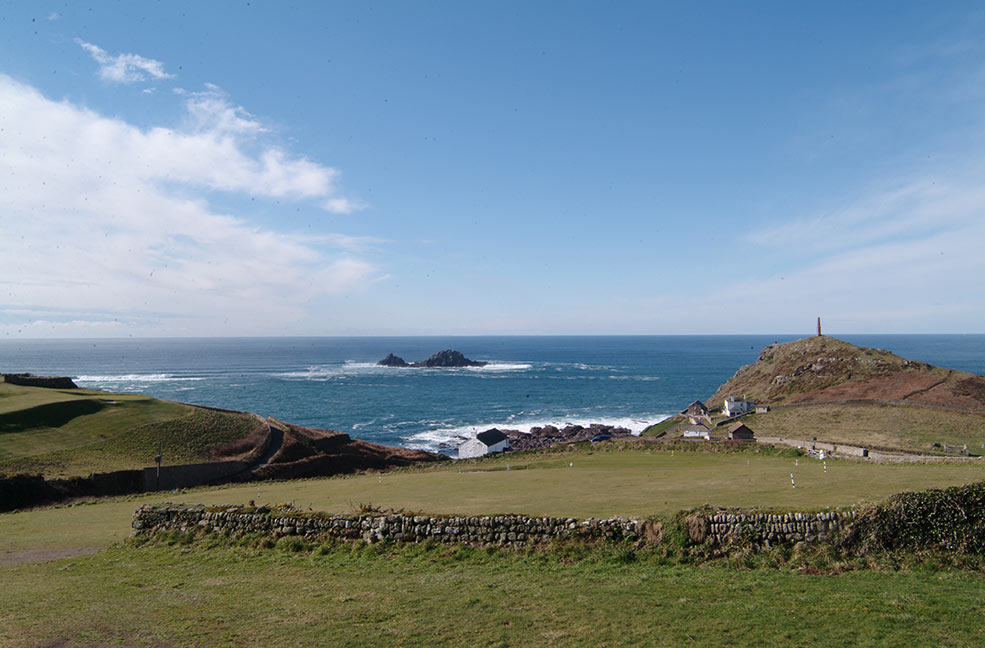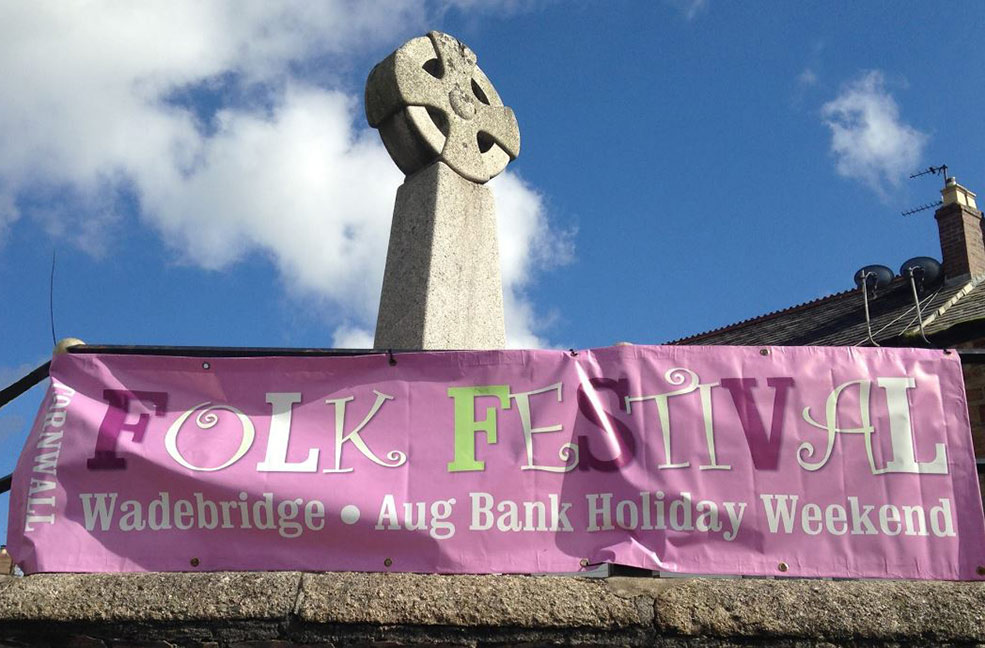Wherever you travel in Cornwall, you’ll see signs of its mining past peppered across the landscape. The iconic engine houses, in particular, with their elegant chimneys silhouetted against the blue sky, have become an instantly recognisable symbol of the county.
So it is hardly surprising that in July 2006 large areas of Cornwall’s countryside were designated a World Heritage Site, as part of the UNESCO Cornwall and West Devon Mining Landscape, in recognition of the unique history of this region. Today the sheave wheels may have stopped turning but the spirit of that influential past is still celebrated at a number of museums and attractions across Cornwall.
So, whether you are excited to get exploring underground or interested in seeing mining machinery at work, here is our pick of some of the best mining museums and attractions to discover in Cornwall.
King Edward’s Mine Museum, Troon

This award winning mining museum hidden deep in the heart of mining country is one of the best preserved mine sites in Cornwall. Originally known as Great Condurrow Mine, it was a working tin mine until 1897 when it was taken over by Camborne School of Mines as a facility to train their students. The mine was then totally re-equipped with some of the finest state of the art mining and milling machinery, and renamed King Edward’s Mine in 1901. When the school moved in 1974 the site was abandoned. But since then the buildings and machinery have been lovingly restored and the museum is now run by an incredibly knowledgeable team of volunteers.
In fact, one of the highlights of this attraction, beyond seeing so many pieces of equipment actually working, is listening to the staff, many of whom once worked in the industry, talking about their experiences and demonstrating the processes used to extract the ore. It’s very much an interactive, hands-on learning experience.
The site covers 22 acres, so beyond the mine buildings themselves you can follow a nature trail through their conservation area, as well as visit the museum’s shop and The Croust Hut café for a pasty.
King Edward’s Mine is also very close to the walking and cycling trail known as the Great Flat Lode, a great place to stretch your legs while discovering even more atmospheric ruined engines houses!
Levant Mine & Beam Engine, Trewellard
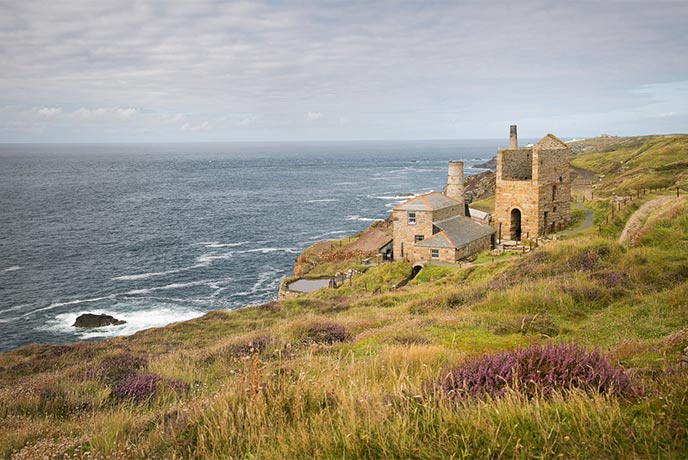
Levant Mine, on what is now known as Cornwall’s Tin Coast, first opened in 1820 and was once one of Cornwall’s greatest copper and tin mines. As you gaze out to sea from its stunning cliff top position, it is hard to imagine that beneath your feet are a thousand shafts and hundreds of miles of tunnels, some of which reach over a mile out beneath the sea bed.
The museum’s informative guides paint a vivid picture of the industry as it was in its heyday and the harsh realities of a miner’s life, while showing you around this fascinating site. There is a chance to go underground, walk along some of the old restored tunnels and marvel at the engineering feats that saw this mine remain profitable for so many years. The brave can even stand on a metal grid and look down into a 2,000ft-deep shaft!
But Levant’s pride and joy has to be its working Beam Engine. Built by Harvey’s of Hayle in 1840, it is perhaps Cornwall’s oldest steam engine. It was the first to be rescued by the Trevithick Society in the 1930s and later restored by volunteers who became fondly known as the ‘Greasy Gang’.
From Levant it is hard to resist the outstanding walking opportunities in either direction along the coast, and this epic scenery takes on a whole new meaning after your visit. The Tin Coast is also just a short hop from the seaside delights of St Ives where glorious beaches, eateries, and art galleries abound.
East Pool Mine, Pool
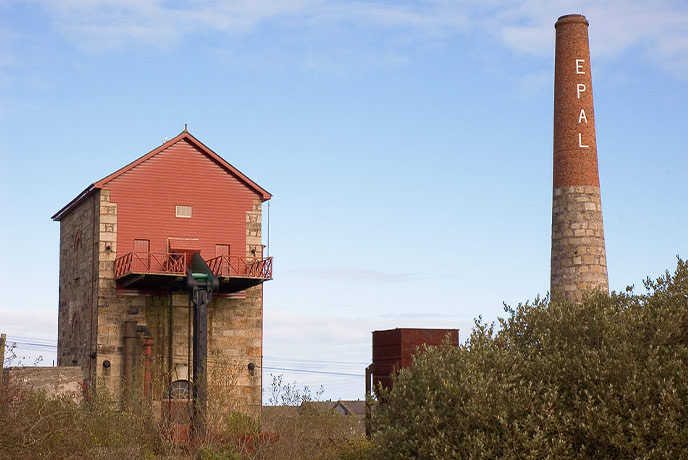
Worked from the early 18th century until 1945, East Pool Mine sits in the centre of the tin producing heartlands of Redruth and Camborne, and today is cared for by the National Trust.
Visitors can discover a fascinating range of mining relics in a carefully curated exhibition in the Discovery Centre, situated in the restored compressor house, as well as two impressive beam engines. The first, a 19th century Cornish beam engine, can be found inside the early 1920s Taylor’s Engine House and is thought to be one of the last of its kind in the world. The second, another rare survivor, is housed in the Mitchell’s Shaft Engine House; it was constructed by the Holman Brothers and was saved from being scrapped in 1941.
A visit to East Pool also puts you in a central position to explore other beautiful places in the Redruth area, such as the historic harbour village of Portreath or the peaceful woodlands of Tehidy nearby.
Geevor Tin Mine Museum, Pendeen

This family-friendly, multi-award winning heritage attraction is also one of the most immersive and evocative in Cornwall. Packed with fun and educational activities, the hands-on exhibition in the Hard Rock Museum also includes collections of rare minerals and some thought provoking footage of miners underground, as well as fascinating interviews with the “Geevor Voices” - the men who once worked here.
Between 1911 and 1990, Geevor mine produced about 50,000 tons of black tin worth roughly £7M, but there has been a mine on this site since at least the early 18th century. When this mine finally closed in 1990 it was a tragic blow for the surrounding community but also for the whole of Cornwall, and since that day much of the Geevor Mine as it was some thirty years ago has been preserved as ‘living history’.
The Dry, the miners’ changing room, is particularly poignant; it’s as if time stopped at that moment on that last shift when the miners came to the surface for the final time. Geevor also offers the opportunity to don a hard hat yourself and venture underground and get a taste of what life was like. You can walk through the tunnels dug by men more than 200 years ago!
The Crown Mines, Botallack
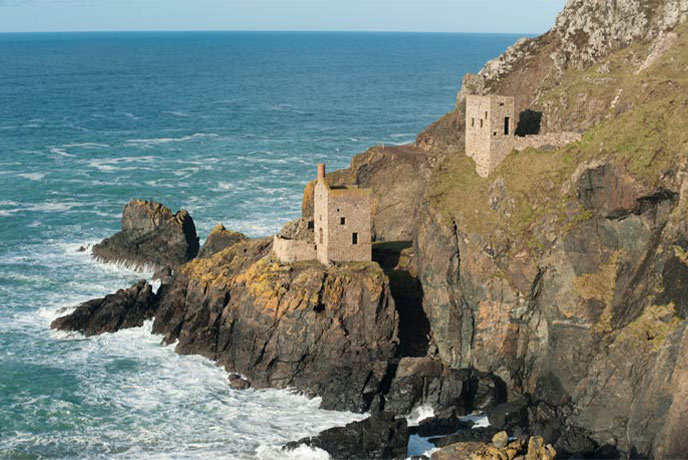
Botallack is another magnificent site in West Cornwall. These iconic engine houses perched on the towering cliffs above the crashing waves of the Atlantic must be one of the most photographed views in Cornwall. Many will recognise the Crown Mines from the TV series Poldark too, their striking beauty has featured many times on the adaptation of the popular books set in Cornwall.
What makes these mines so special and popular with visitors is that these enigmatic old buildings seem to have become part of the surrounding landscape, they somehow enhance the natural beauty with the ingenuity and audacity of their construction.
Botallack was a submarine mine with shafts as much as 570m deep extending half a mile out to sea. During its life it produced 14,500 tons of tin, 20,000 tons of copper and 1,500 tons of refined arsenic. Now owned and managed by the National Trust, you can discover the remains of this site’s mining past stretched out across a breath-taking landscape. There are information boards and walking trails to follow to help you to get the most out of your visit.
Restored buildings such as the old Count House, where miners would once have come to collect their wages, have now been converted into a visitor’s centre and café.
Wheal Martyn Museum & Clay Works, St Austell
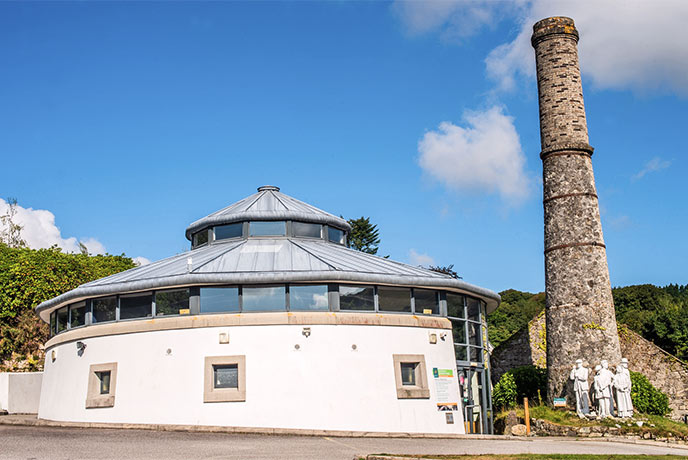
Wheal Martyn Museum reminds us that Cornwall’s mining heritage did not solely rely on copper and tin, China Clay was and still is a vitally important part of the county’s industrial economy. This museum is also part of the vast World Heritage Site and helps to give a fascinating glimpse into all aspects of this often overlooked industry.
Highlights include the magnificent working water wheels and a chance to climb to a lookout point and marvel at the enormous working china clay pit. You can really immerse yourself in the atmospheric grounds of the original Victorian clay works, bursting at the seams with tools, machinery, artefacts and stories. And there’s the opportunity to discover Wheal Martyn’s past life at the heart of this global business and to hear real life tales of the industry which shaped the surrounding landscape, producing the iconic ‘Cornish Alps’. There are also wonderful records of the people in mid-Cornwall and beyond, whose lives were shaped by this so-called ‘white gold’.
As well as child friendly activities in the Discovery Centre, the picturesque site is surrounded by woodland which offers nature trails and picnic spots aplenty. Wheal Martyn is also within easy reach of other attractions such as The Eden Project, which was actually built in a disused china clay quarry.
The Mineral Collection, Royal Cornwall Museum, Truro
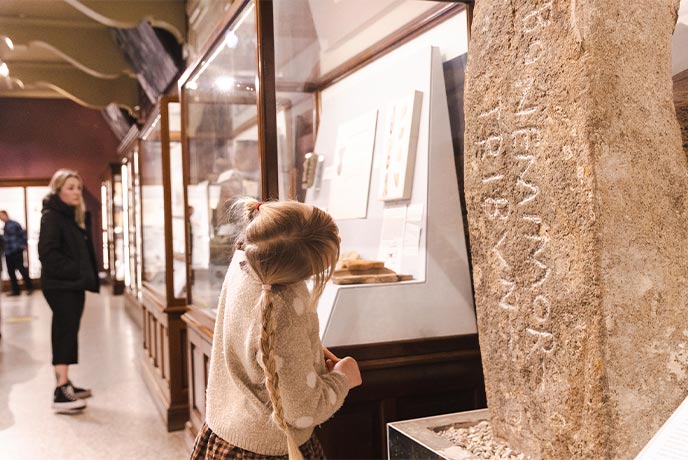
This museum gathers together some of the finest artefacts from across the length and breadth of Cornwall, which includes many exhibits related to Cornish mining, from prehistoric times to the present day. But its famous Mineral Collection is a fascinating highpoint and considered to be one of the finest collections held by a regional museum in the whole of the British Isles.
The permanent exhibition housed in a separate galley on the ground floor includes the world famous Rashleigh Collection which contains exceptional Cornish mineral specimens. In total the museum holds a staggering 16,500 mineral and rock samples, many of which have been discovered in Cornwall or by Cornish miners across the globe. The range of colours, textures and bizarre formations is mesmerising.
The Royal Cornwall Museum is packed full of impressive exhibits that children and adults alike will enjoy, while Truro itself, as Cornwall’s only city, is a great place to explore, indulge in a little shopping and grab something to eat in one of the amazing cafés. You can also make your visit even more special by arriving by ferry from Falmouth, a beautiful boat trip through the Carrick Roads passing the National Trust property of Trelissick.
Cornwall Underground Adventures
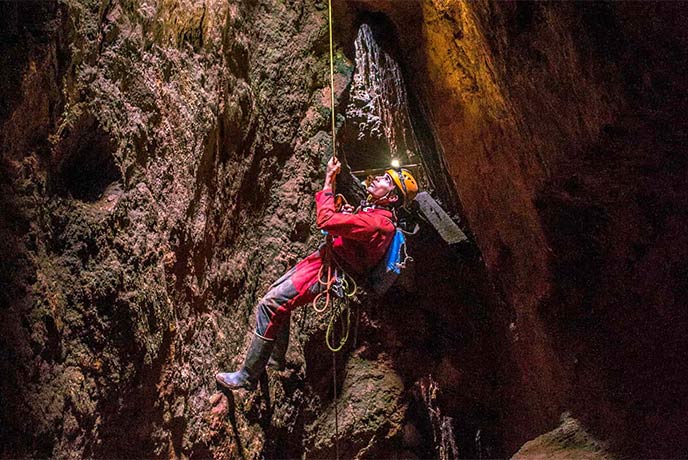
For those who want to get involved with something a little more daring, Cornwall Underground Adventures offers the chance to actually explore deep underground. Their guided trips enable you to discover a subterranean world that few get the chance to see. Those seeking a thrill can try abseiling into mine shafts, crossing gaping chasms and traversing flooded passages, but there are some more sedate options too, such as exploring the maze of tunnels and marvelling at the mineral formations.
All trips are led by experienced guides who are also expert mine historians, and tours can range from gentle walk in, walk out trips to much more demanding caving-style adventures!
For more information take a look at the Cornwall Underground Adventures website.
And Finally . . .
Poldark Mine, Wendron
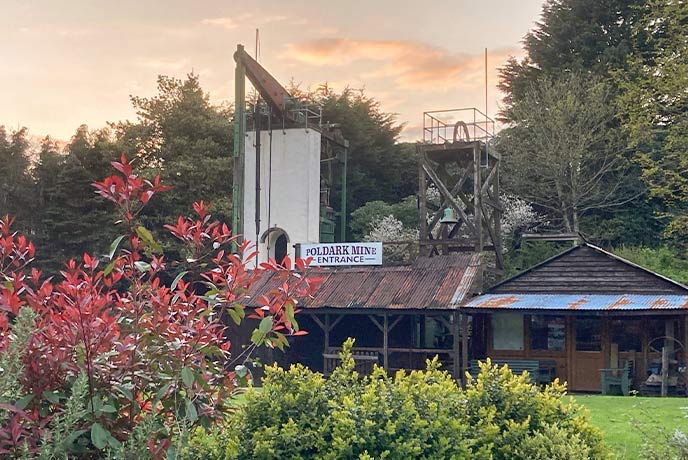
No list of mining attractions in Cornwall would be complete without this firm family favourite. First opened in 1966, Poldark Mine has been popular with visitors and locals ever since and was described by UNESCO as ‘the Jewel in the Crown of the Cornish Mining World Heritage’. Up until recently it was the only complete 18th century tin mine open to the public for genuine underground tours in the whole of the UK, and the only mine in Cornwall that pumps water to allow public access.
While the mine has sadly been closed since 2020, the museum is delighted to announce that they will be partially reopening in the summer of 2023, and although the underground tours are still on hold for now, the museum, monuments and the 10 acre gardens will again be open to visitors!
If this guide has inspired you to explore more of Cornwall’s incredible mining heritage, discover a cosy Cornish cottage perfect for you to relax in after you’ve enjoyed your underground adventures!




